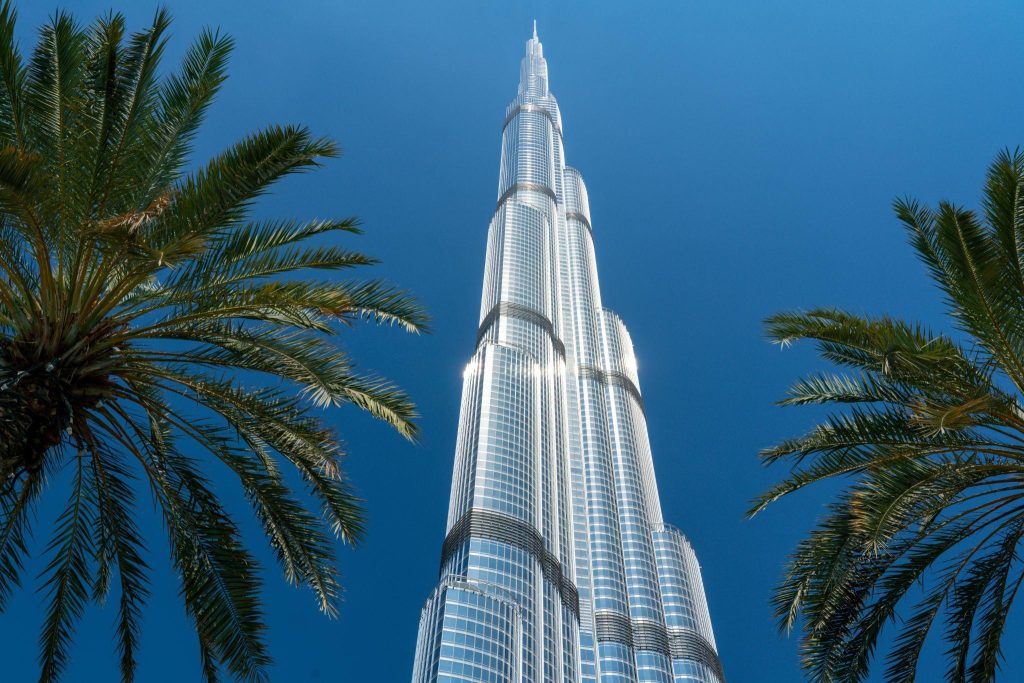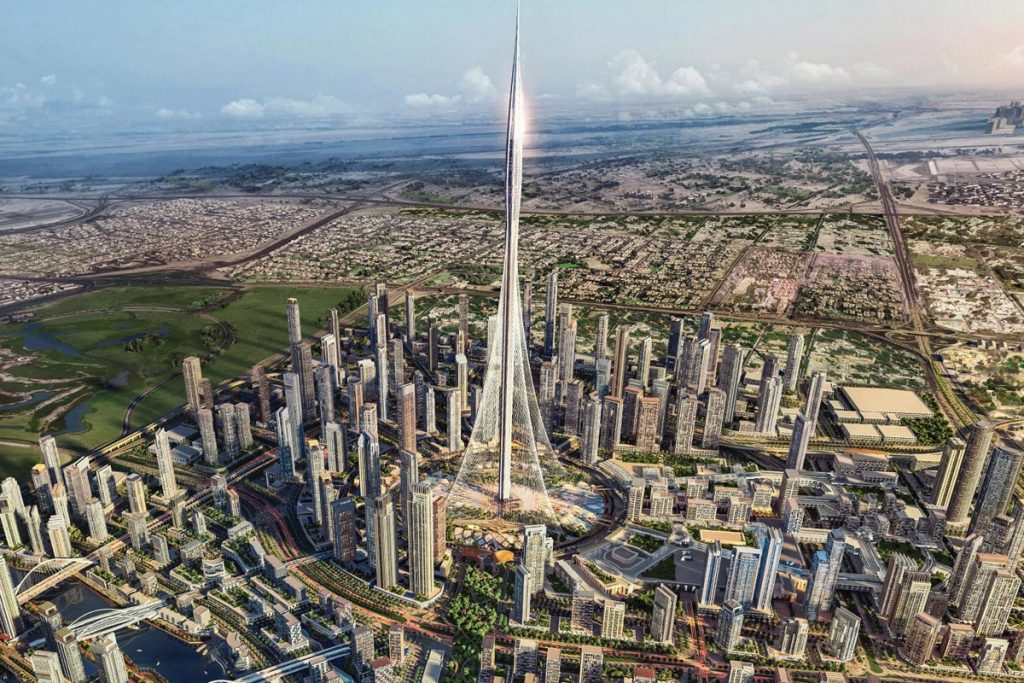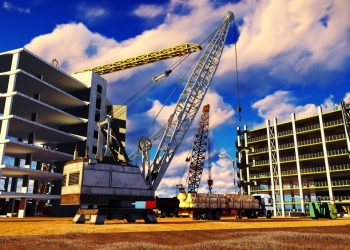The world has been captivated by the incredible heights of the world’s tallest buildings. From the Empire State Building to the Burj Khalifa, these towering behemoths have been the subject of fascination for centuries. In this blog post, we’ll be exploring the 15 tallest buildings in the world, their features, history, and effects on the environment. We’ll also be discussing the challenges of building the world’s tallest buildings and the benefits of living in them. So, let’s get started!
Introduction to the World’s Tallest Buildings
The world’s tallest buildings have always been a source of awe and admiration. From their incredible heights and intricate designs, these structures have become symbols of human ingenuity and progress. They are feats of engineering and are symbols of a nation’s power and prosperity. But what exactly makes a building the world’s tallest? Generally, the height of a building is measured from the ground level to the highest point of the structure, including any antennae or other structures that are attached to it.
The world’s tallest building is the Burj Khalifa in Dubai, United Arab Emirates. At an incredible height of 828 meters, the Burj Khalifa is the tallest building in the world by a significant margin. The second tallest building is the Shanghai Tower in China, standing at 632 meters. From there, the rest of the world’s tallest buildings follow in rapid succession, with the Abraj Al Bait in Saudi Arabia and the Ping An Finance Center in China rounding out the top 5.

The 15 Tallest Buildings in the World
- Burj Khalifa (828m)
- Shanghai Tower (632m)
- Abraj Al Bait (601m)
- Ping An Finance Center (599m)
- Lotte World Tower (554.5m)
- Taipei 101 (509.2m)
- One World Trade Center (541.3m)
- Guangzhou CTF Finance Centre (530m)
- Shanghai World Financial Center (492m)
- International Commerce Centre (484m)
- Petronas Towers (452m)
- CITIC Tower (450m)
- Zifeng Tower (450m)
- Bank of America Tower (447m)
- Shanghai Tower (425m)
Exploring the Features of the 15 Tallest Buildings
The 15 tallest buildings in the world have some of the most impressive features and amenities in the world. From the observation decks at the top to the luxurious apartments in the lower levels, these buildings offer an unparalleled experience. The Burj Khalifa, for example, has an observation deck on the 124th floor, offering breathtaking views of the city. The Shanghai Tower, on the other hand, has the world’s highest and fastest elevator, taking visitors to the observation deck in just a matter of minutes. The Abraj Al Bait, meanwhile, is home to a 5-star hotel, a shopping mall, and a museum.
The Ping An Finance Center has a unique sky bridge on the 115th floor, connecting the two sides of the building. The Lotte World Tower has an outdoor observation deck on the top of the building, allowing visitors to enjoy the stunning views of the city. The Taipei 101 is home to the world’s fastest elevator, which can travel up to the observation deck in just 37 seconds. The One World Trade Center has an observation deck on the 100th floor, with stunning views of the city.
Statistical Information on the 15 Tallest Buildings
The 15 tallest buildings in the world are some of the most impressive structures in the world. Here is some statistical information on the 15 tallest buildings.
The Burj Khalifa is the tallest building in the world, standing at 828 meters. It has 160 floors and was completed in 2010. The Shanghai Tower is the second tallest building in the world, standing at 632 meters. It has 128 floors and was completed in 2015. The Abraj Al Bait stands at 601 meters, with 120 floors. It was completed in 2012. The Ping An Finance Center stands at 599 meters, with 115 floors. It was completed in 2017. The Lotte World Tower stands at 554.5 meters, with 123 floors. It was completed in 2017. The Taipei 101 stands at 509.2 meters, with 101 floors. It was completed in 2004.
The One World Trade Center stands at 541.3 meters, with 104 floors. It was completed in 2014. The Guangzhou CTF Finance Centre stands at 530 meters, with 111 floors. It was completed in 2016. The Shanghai World Financial Center stands at 492 meters, with 101 floors. It was completed in 2008. The International Commerce Centre stands at 484 meters, with 118 floors. It was completed in 2010. The Petronas Towers stands at 452 meters, with 88 floors. It was completed in 1998. The CITIC Tower stands at 450 meters, with 111 floors. It was completed in 2018. The Zifeng Tower stands at 450 meters, with 66 floors. It was completed in 2010. The Bank of America Tower stands at 447 meters, with 72 floors. It was completed in 2009. The Shanghai Tower stands at 425 meters, with 128 floors. It was completed in 2015.
Benefits of Living in the World’s Tallest Buildings
Living in the world’s tallest buildings offers a range of benefits. From the incredible views to the luxurious amenities, these structures offer a life of luxury and convenience. The views from the observation decks are unparalleled, offering breathtaking views of the city. The apartments in the lower levels are luxurious, offering amenities such as swimming pools, gyms, and spas. The buildings are also equipped with the latest technology, including high-speed elevators and smart home systems. Living in the world’s tallest buildings is an experience like no other.

The History of the World’s Tallest Buildings
The history of the world’s tallest buildings is a fascinating one. The first building to exceed the height of the Great Pyramid of Giza was the Eiffel Tower in 1889. Since then, the world has been captivated by the ever-increasing heights of the world’s tallest buildings. The Empire State Building, which was completed in 1931, was the first building to reach the height of 1,250 feet. It was the world’s tallest building for almost 40 years. In 1970, the Sears Tower in Chicago surpassed the Empire State Building, becoming the world’s tallest building.
The Petronas Towers in Kuala Lumpur, Malaysia, were the tallest buildings in the world from 1998 to 2004. The Taipei 101 was the world’s tallest building from 2004 to 2010. The Burj Khalifa in Dubai was completed in 2010, becoming the world’s tallest building. It has held the title ever since.
Future Developments in the World’s Tallest Buildings
The future of the world’s tallest buildings is an exciting one. In the coming years, we can expect to see taller and more impressive buildings being built. The Jeddah Tower in Saudi Arabia is currently under construction and was expected to be completed in 2020, but the project is on hold. Once completed, it will be the world’s tallest building, standing at an incredible height of 1,000 meters. The Dubai Creek Tower is also under construction and was expected to be completed in 2021, but is also on hold. When completed, it will be the world’s second tallest building, standing at an impressive height of 928 meters.

The Effects of the World’s Tallest Buildings on the Environment
The world’s tallest buildings have a significant effect on the environment. The construction of these buildings requires large amounts of resources and energy. The materials used in the construction process can have a negative impact on the environment, especially if they are not sourced sustainably. The energy used to power the buildings is also significant, as the buildings require a large amount of electricity to run.
The emissions from the construction process can have a negative effect on air quality, leading to air pollution. The buildings can also have an effect on the local ecology, as they can block out sunlight and cause heat islands in the surrounding area.
The Challenges of Building the World’s Tallest Buildings
Building the world’s tallest buildings is a challenging and complex process. These buildings require specialized engineering and construction techniques, as well as advanced materials and technologies. The logistical challenges of building such a structure are immense, as the materials and equipment must be brought to the location and assembled in a timely manner. The safety of the workers and the public must also be taken into consideration, as building such a structure is a risky endeavor.
The cost of building the world’s tallest buildings is also immense, as the materials, labor, and equipment needed for the project can cost millions of dollars. The timeline of building the world’s tallest buildings can also be unpredictable, as unexpected delays can occur due to inclement weather or other factors.
Conclusion
The world’s tallest buildings are feats of engineering and are symbols of human progress. From the Burj Khalifa to the Jeddah Tower, these structures have captivated us with their incredible heights and intricate designs. In this blog post, we’ve explored the 15 tallest buildings in the world, their features, history, and effects on the environment. We’ve also discussed the challenges of building the world’s tallest buildings and the benefits of living in them. We hope this blog post has been informative and has given you a better understanding of the world’s tallest buildings.













